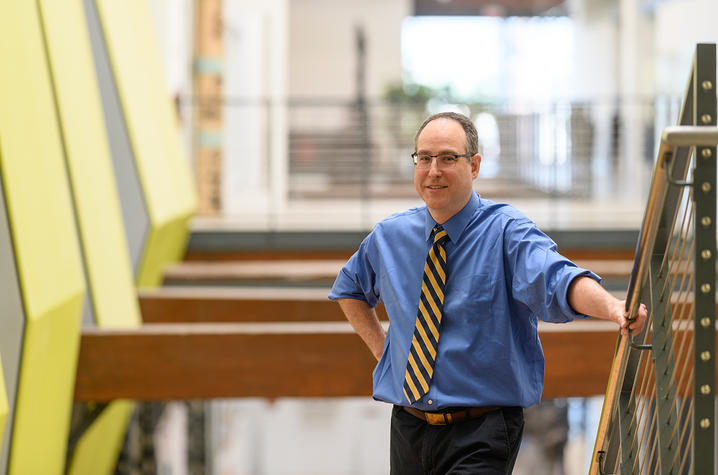How a $5 Plastic Heart is Improving Surgery at UK
LEXINGTON, Ky. (July 25, 2019) — It's the size of your fist and looks like a carnival prize. But turn it around in your hands and eventually you'll realize that it's a heart. An anatomically correct model of the heart. In plastic.
3D printing has been a hot topic for almost a decade now, with applications from architecture to manufacturing, and enthusiasts believe that one day we'll be transplanting 3D printed organs or creating custom artificial limbs for amputees. But 3D printing has already come to UK HealthCare in a meaningful way, helping patients understand their care and helping physicians refine how they deliver care to their patients.
And it all started with Dr. Michael Winkler.
Winkler has made his mark at UK HealthCare's Gill Heart & Vascular Institute by merging his background in visual arts with his scientific expertise to create custom 3D printed hearts as a tool for both physicians and their patients.
"I didn't invent 3D printed hearts," Winkler said. But his version costs about the same as a combo meal at a fast-food restaurant, a fraction of the cost at other laboratories.
Winkler worked with the University of Kentucky's School of Art and Visual Studies (SAVS) to transform data-rich imaging files into near-perfect replicas of a patient's heart, which he considers a useful tool in clinical, research and educational settings.
"Fitting patients with new heart valves or stents is challenging because everyone's anatomy is slightly different in size and shape," Winkler said. "Doctors are very good at 'guesstimating,' but about one-third of the time their guess is off and a $30K valve has to be thrown away."
"It's wasteful, it's expensive, and the procedure takes longer, which is hard on the patient," he said. But Winkler's 3D printed hearts allow doctors to make precise fittings before the patient is wheeled into the Cath Lab.
When Dr. James Quintessenza, chief of pediatric cardiothoracic surgery at UK's Kentucky Children's Hospital, had a particularly challenging case of a young patient with a rare valve deformity, he tapped Dr. Winkler to assist.
According to Quintessenza, before this technology was available surgeons had partial or limited imaging studies to rely on and often had to make 'game time' decisions once surgery itself uncovered new information. But a 3D print of his patient's valve gave him time to identify a problem that wasn't easily seen with traditional imaging studies and develop a strategy in advance of the surgery.
"Having this information beforehand was critical to [the procedure's] success," he said.
"Mike is really ahead of the curve," Quintessenza said. "3D printing is common, but this technology adds a critical level of resolution, which ultimately translates to better data for physicians and better value for the patient."






